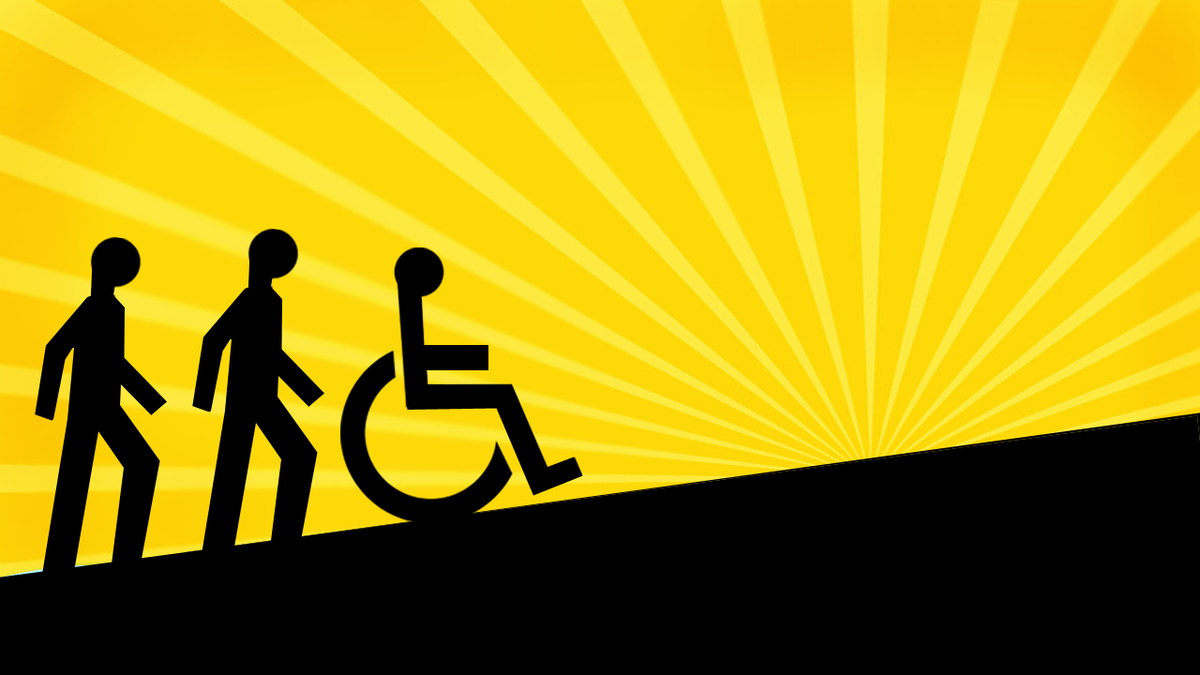A number of models of disability exist. The social model is an inclusive approach.
It asserts that the most significant barrier for individuals with disabilities is not the disability itself; rather the most significant barrier is the environment in which a person with a disability must interact. Society disables people, through designing everything to meet the needs of the majority of people who are not disabled.
This model states that the oppression and exclusion people with disabilities face is caused by the way society is run and organized. It purports that for full inclusion, there must be significant changes made and barriers removed so everyone can participate on an equal basis within society. Society can do a great deal to reduce, and ultimately remove disabling barriers. This task is the responsibility of society, rather than the person with a disability.
Social Model Animation
A short (one and a half minute) animation provides a poignant illustration. It plays with the idea of role reversal in a town where only wheelchair users live so they design a town to meet their needs. Their world is disrupted by the arrival of people who walk.
Altering the Environment to Create Equal Access
The social model sets the focal point of accessibility on altering the environment to create equal access. The following are 2 examples: 1 from the physical and 1 from the online environment.
Ramps and Curb Cuts: a Physical Environment Example
In the physical world steps are disabling barrier for people who use wheelchairs. Under a social model a ramp or curb cut are added so that the wheelchair user is free to travel onward.
Ramp and Curb Cut Outcomes
Unusual things happen when the physical environment is designed to be accessible to people with disabilities. It wasn't long after sidewalks were redesigned to accommodate wheelchair users that the benefits of ramps and curb cuts began to be realized by everyone. Today, curb cuts are ubiquitous. Imagine crossing the street pulling a suitcase on wheels, and then banging over the curb. Or strollers, the delivery person with the dolly and so many other uses.
Captioning: an Online Environment Example
In the online environment videos without captions are a barrier for people:
- who are Deaf and cannot hear the audio
- who are hard of hearing and cannot hear some of the content
- with learning and cognitive disabilities who need to see and hear the content to better understand it
Under the social model captions are added so that people with disabilities can obtain the audio content. Captioning provides a lifeline by displaying audio content on screen as synchronized text.
Captioning Outcomes
Just as in the curb cut/ramp example, accurate captions also have beneficial outcomes for more than people with disabilities. As 3Play Media points out in the article, 80% of People Who Use Closed Captions Are Not Hard of Hearing:
Viewers who know English as a second language often benefit from closed captions, because it makes it easier to follow along with spoken content that is not as familiar to them. Closed captions help with comprehension: dialogue that is spoken very quickly benefits from captioning, as does dialogue with accents, mumbling, background noise, or complicated/esoteric subject matter. For video that is published online, closed captions increase viewer retention and user engagement, as well as search engine optimization. Captions allow viewers to watch videos in sound-sensitive environments like offices and libraries.
The Multimedia Hub is available to assist the UMD community in providing captioning. Let's all do our part to remove disabling barriers.
